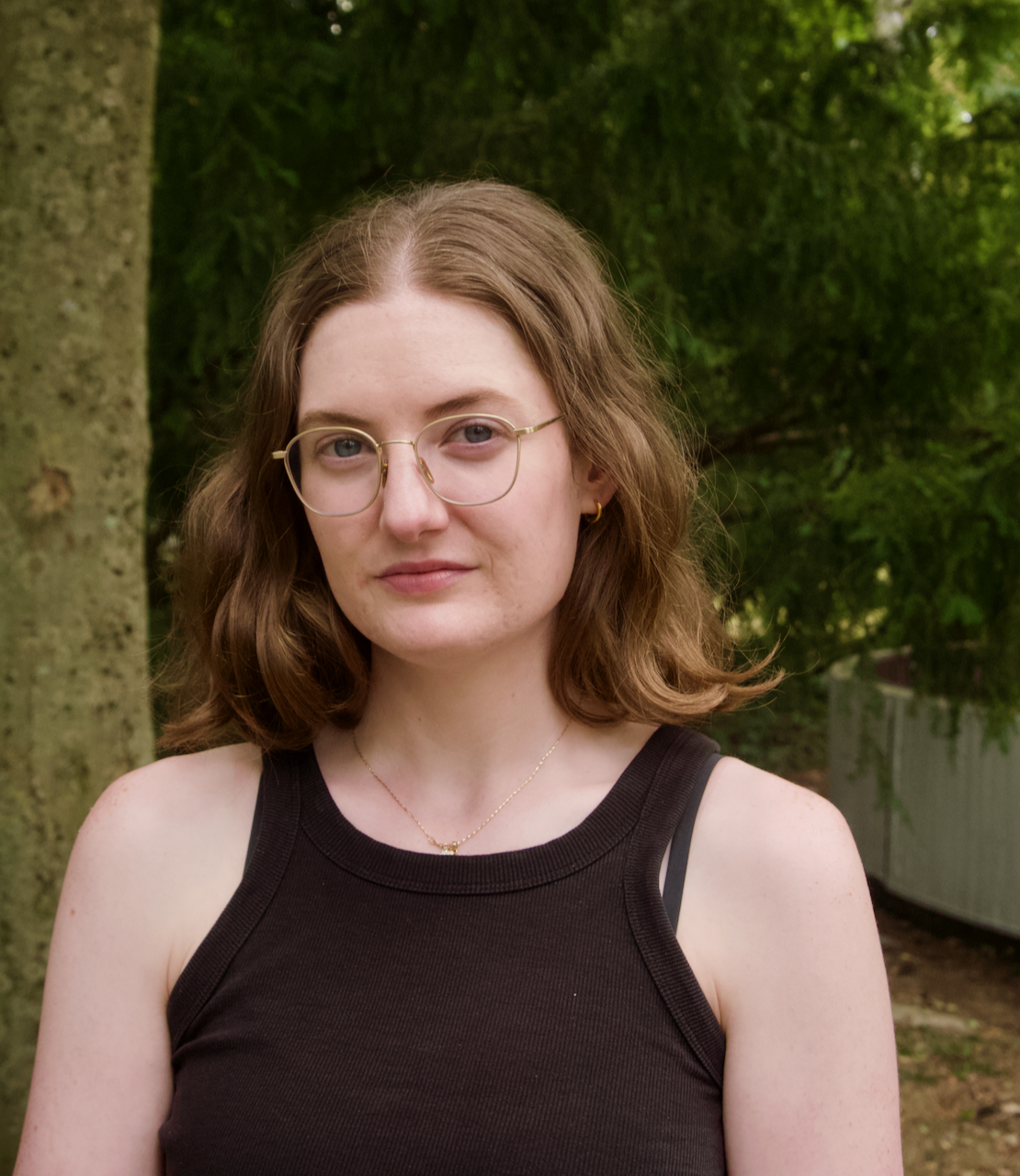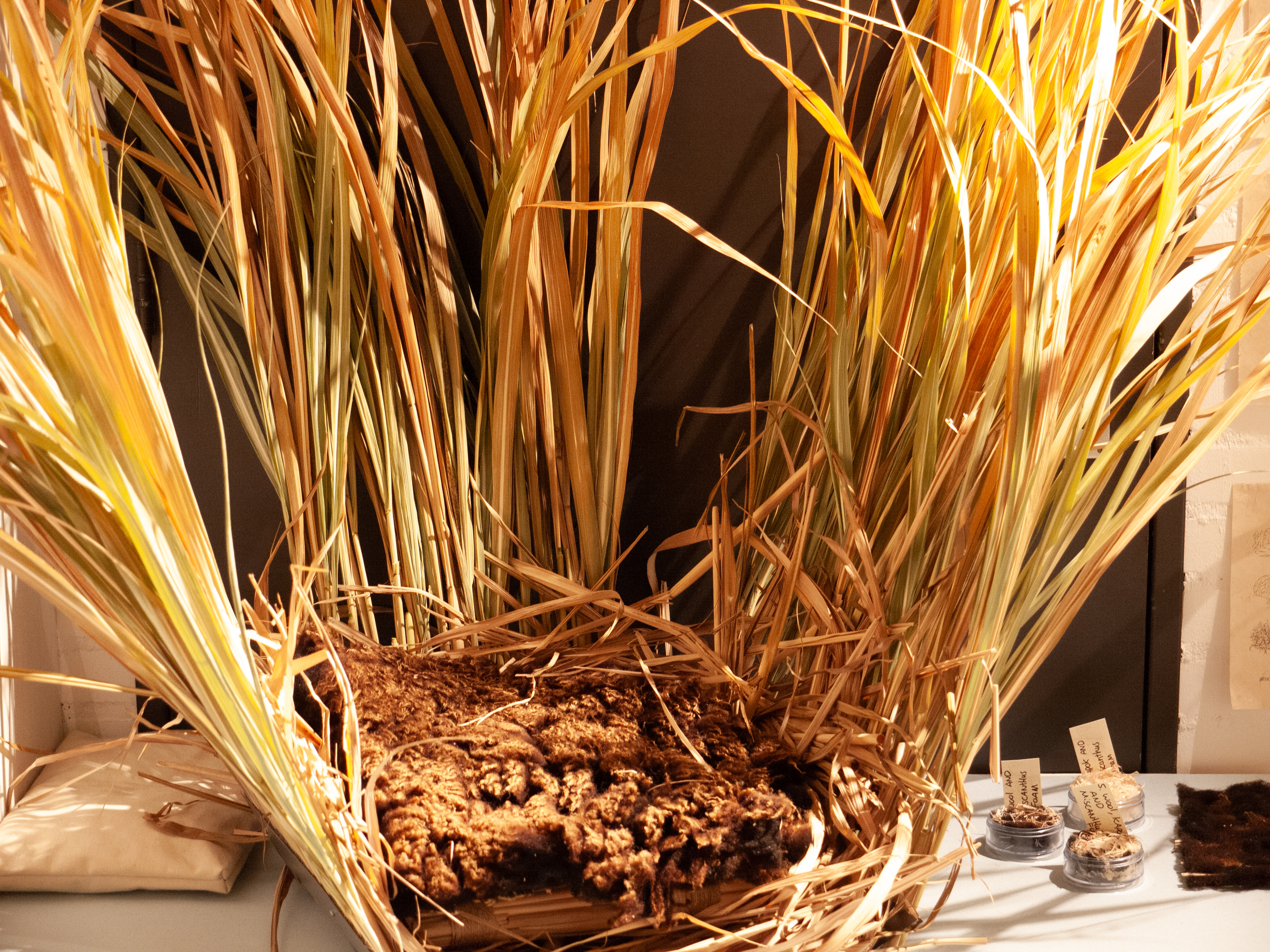Isabel Legate is a multidisciplinary artist working across, film, performance, painting, and drawing. She received her BFA from The Cooper Union in New York and is currently a master’s student at the Piet Zwart Institute in Rotterdam. Legate’s work explores themes of desire, metamorphosis and collapse through striking visuals and poetic narratives. She has performed and exhibited internationally at the LUMA Foundation (CH), Vernacular Institute (MX), The Power Station (TX), Performance Space New York (NY), and more.
Can you describe your graduation project and its main focus?
My research focuses on the architecture of the fashion retail fitting room, the instrumental role of its mirror, and how this space has historically reflected and shaped social conditions. The graduation project itself is a short film inspired by Clarice Lispector’s short story “Love”. When a successful young woman encounters her blind doppelgänger, she is thrust into a disorienting, sensory spiral through the surreal, synthetic space of fashion retail. As the boundaries between body, mirror, and commodity blur, she experiences the possibility of not being perceived and undergoes a visceral awakening. The film explores identity, eroticism, consumption, and the conflicting emotions that animate a sensation of “becoming” within the retail space and in our personal lives.
What inspired you to choose this particular subject or theme?
A lot of this work stems from my ongoing interests, even before studying at MIARD. I’ve long been interested in retail spaces, the experience of dressing, the performance of identity, reflections, mirrors, and so on. The research I’ve done at MIARD has helped me find a language for things I’d been thinking about for a while but couldn’t quite articulate. This project became a way to bring those ideas together.
How did you develop and refine your ideas throughout the project?
The written part of my thesis played a crucial role in developing the project because it pushed me to articulate things clearly, things like what exactly is the history of retail architecture? What is the fitting room? And what is the function of its mirror? That ideological clarity helped shape the project. Creatively, the film has developed through a strong visual and material vocabulary that I have worked on over the years. In addition to the film, I’m also making drawings, painting, and performing. All of these elements have informed the project.
As you approach graduation, what challenges have you encountered in completing your project?
The biggest challenge has been focus. On a really practical level, that’s been the hardest part. I’ve also felt hesitant about developing a team—moving to a new city, meeting and working with different people, which has seemed daunting, but it’s all shifting now.
What aspects of your project are you most excited about?
A few things. First, this project is taking on a more narrative tone, which is a new direction for me, and I’m excited about that. I’m also excited to be working with a group of people; it’s becoming more collaborative, which is energizing. More broadly, I’m excited that the themes I’ve been thinking about for a long time (years!) are finally taking shape. I feel like I’m able to articulate them now, and that clarity helps others engage with the work more deeply. And on a material level, I love working with film, editing, and audio. It’s satisfying when things click and there is an emotional resonance with the ideas and visuals.
Are there any specific concerns or obstacles you're currently facing?
The biggest obstacle right now is the timeline. It’s tight, and there’s still a lot of work to do.
How has your experience at PZI contributed to your growth as an artist/designer/etc.?
Coming from a fine art background, it was a big change to enter a design program. In the beginning, I honestly questioned why I had even chosen to do this. But now, at the end of the two years, I understand that the program has helped me develop a strong methodology. There’s been structure but also space to shape my own approach and this has been so enriching for my practice. I’ve learned how to articulate my decisions, how to consciously choose when to explain or not explain something, and that has made me feel more confident in my work and when speaking about it publicly.
Looking back, how have you evolved since your first year in the program?
In the first year, I was struggling with the whole idea of design as a practice. I was a bit angsty and resistant towards it. I also wasn’t sure how to define myself or my work. Now, I feel like I have more clarity around my interests and my vision. So I’ve grown to accept and actually be excited about the design aspects of what I’m doing. That’s a big shift.
In what ways has your time at WdKA prepared you for this final project?
Some of the more rigid assignments in the program, like working with a specific site or creating clear deliverables, seemed limiting at first, but ended up being incredibly generative. I feel like I learned a set of rules that I could then decide how to break. That gave me tools for developing a project on my own terms.
What are your immediate plans after graduation?
Well, ideally I’ll go to a beach for a bit! Aside from that, I’ll be applying to extend my visa, applying for funding, and trying to show my work.
What are your long-term aspirations within your field?
To make a meaningful contribution to the arts and to create work that resonates with others
Do you have any advice for current or prospective students in your program?
“The egg is the macrocosm and the microcosm, the dividing line between the Big and the Small which makes it impossible to see the whole. To possess a telescope without its other essential half—the microscope—seems to me a symbol of the darkest incomprehension. The task of the right eye is to peer into the telescope, while the left eye peers into the microscope.” ― Leonora Carrington, Down Below
Is there anything else you'd like to share about your journey or project?
Yes, our show will be open at the Nieuwe Institute from July 3-13 – come by!


